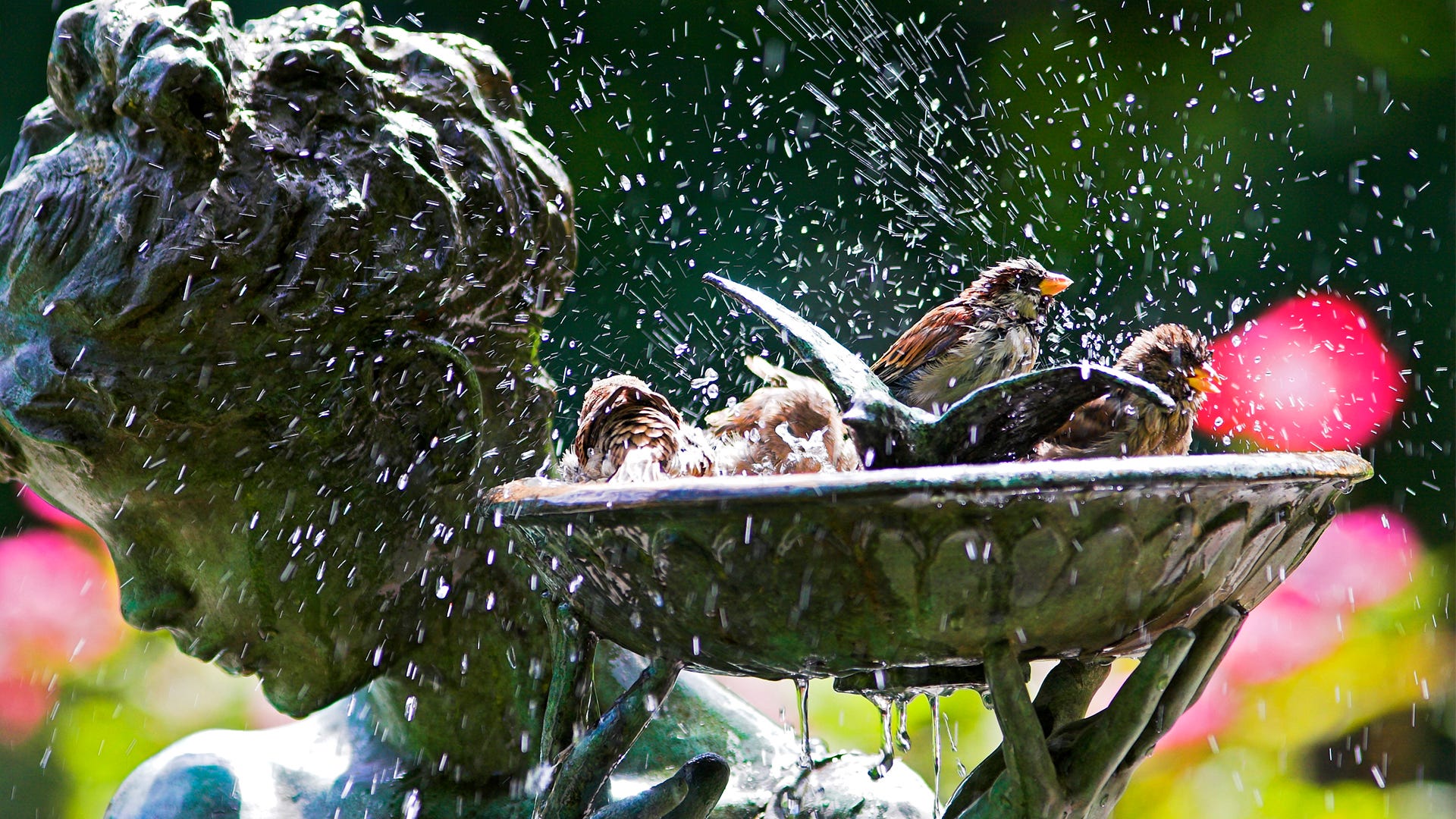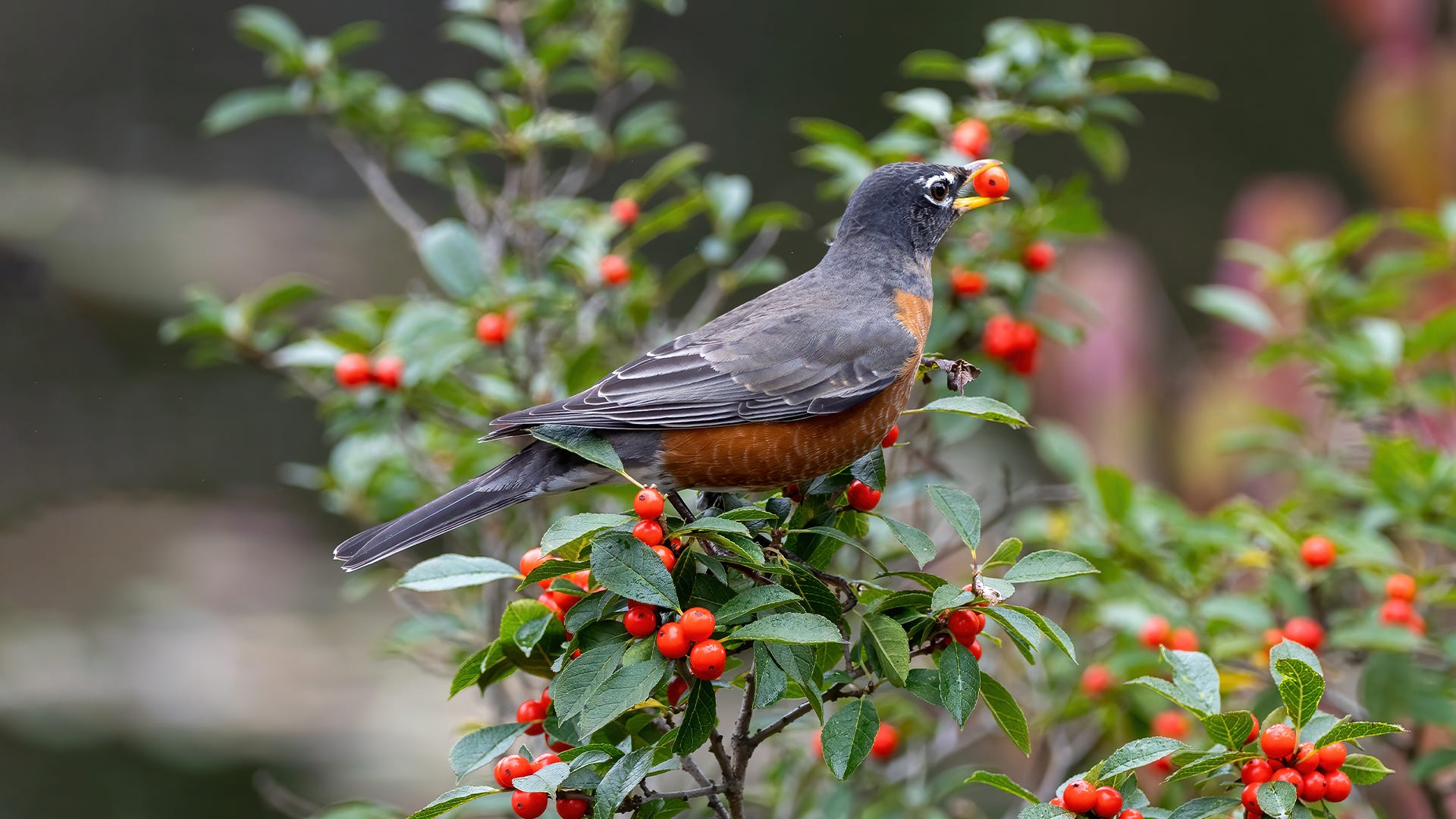
Never underestimate a good bath – even for birds. If you feed your backyard birds, you’ve probably seen them stop for a bath a time or two, even if you don’t have a traditional birdbath. Watching birds socialize and take their turns at the bath can be an entertaining sight, but have you ever wondered why birds bathe or what they’re actually doing to get clean?
Why Birds Bathe
 Before we dive into a bird’s process of bathing, you might be wondering why baths are important in the first place. While cooling down can be a draw to the water in the summer, the primary function of bathing is just what you might guess: maintaining feathers.
Before we dive into a bird’s process of bathing, you might be wondering why baths are important in the first place. While cooling down can be a draw to the water in the summer, the primary function of bathing is just what you might guess: maintaining feathers.
Most birders know that feathers are a significant lifeline for our flying friends. In addition to providing the ability to fly, feathers help to insulate and waterproof a bird’s delicate body. While feathers are periodically replaced – every few months to a year – they need to be well maintained while they remain. Flying, mites, bacteria, and other factors all wear down feathers in the time before they are replaced.
However, regular bathing and preening help to keep these vital feathers in optimum condition for longer periods. Additionally, since clean feathers allow birds to be agile fliers, bathing could also be considered an important aspect of survival – birds that are more adept at flying can escape predators with much more ease.
Splish-Splash the Birds Are Taking Baths

Have you ever noticed that when birds are in the water, they tend to splash around a lot? This is due to the lightweight build of most birds. Their hollow bones prevent them from being able to submerge themselves fully in the water.
In addition, deep water would cause the birds to become soaked, which would prevent them from flying properly. This is one of the reasons birds prefer baths that are shallow – they splash around until their bodies are just wet enough – and opt for taking many short baths rather than one long bath.
During their bath, birds can raise up some of their feathers on certain areas of their bodies as they splash the water. They work the splashing water down into their skin, helping them get a thorough bath and remove any parasites that may be buried down beneath their feathers.
Bird feathers also feature crevices where dirt can build up. This is where the preening process comes in handy. By applying a bit of oil from their preen gland, which is typically located near the tail, birds are able to “unzip” and “zip” their feathers with their beaks after removing the dirt. Preening oil keeps feathers soft and flexible for flying, but too much can also cause feathers to clump. Water helps to wash off some of this oil.
5 Ways to Make Your Birdbath More Appealing
Now that you understand why and how birds bathe, it’s time to implement your own backyard birdbath oasis. While birds will bathe in just about any water they can find – puddles, ponds, birdbaths, and sprinklers – there are a few things you can do to prepare a tempting bathing area for your feathered friends.

- Measure the depth: Water should be no more than ½ to 1 inch deep at the edges, and no more than 2 to 3 inches deep in the middle.
- Provide dripping water: Birds love the sight and sound of moving water. Consider adding a mister or dripper, commercial or homemade, so the water drips into the bath where birds can enjoy.
- Add stones or branches: Arrange objects such as stones and small branches in the deeper parts of the water so birds can stand on them if they just want a drink.
- Place it near trees: By doing this, not only will you be providing your feathered friends with shade to keep the water cool, but it will also create a nearby space to preen.
- Keep it clean: Birdbaths should be cleaned and water should be replaced every few days. This will prevent the buildup of dirt, droppings, and algae, while also reducing potential mosquito populations.
- Heat it up: Believe it or not, birds still want to bathe in the winter. To prevent freezing, consider adding a heater to your backyard birdbath. As an alternative, you can also place a shallow dish of water outside every day and refresh it when it freezes.
Do you have more questions about bird bathing? Let us know! Also, be sure to share pictures of your bustling birdbath on your next visit to our Facebook page.
Want to see more helpful articles like this one? Sign up for our e-newsletter, which will provide links to more great resources, as well as give you exclusive updates on products.







